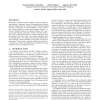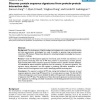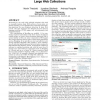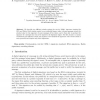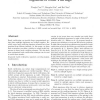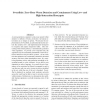114
Voted
PVLDB
2010
14 years 11 months ago
2010
Multi-pattern matching involves matching a data item against a large database of “signature” patterns. Existing algorithms for multipattern matching do not scale well as the s...
91
Voted
SIGOPS
2002
15 years 9 days ago
2002
Threshold signature schemes are examples of threshold cryptosystems, as introduced by Desmedt, [4]. The purpose of this paper is to present a rather simple alternative to threshol...
117
Voted
JOC
2002
15 years 9 days ago
2002
We present a polynomial-time algorithm that provably recovers the signer's secret DSA key when a few bits of the random nonces k (used at each signature generation) are known ...
109
Voted
BMCBI
2005
15 years 16 days ago
2005
Background: The development of high-throughput technologies such as yeast two-hybrid systems and mass spectrometry technologies has made it possible to generate large protein-prot...
94
Voted
TCS
2008
15 years 17 days ago
2008
Transitive signatures allow a signer to authenticate edges in a graph in such a way that anyone, given the public key and two signatures on adjacent edges (i, j) and (j, k), can c...
131
Voted
SIGIR
2008
ACM
15 years 17 days ago
2008
ACM
Motivated by our work with political scientists who need to manually analyze large Web archives of news sites, we present SpotSigs, a new algorithm for extracting and matching sig...
93
Voted
JOC
2008
15 years 19 days ago
2008
We describe two different attacks against the iso/iec 9796-1 signature standard for RSA and Rabin. Both attacks consist in an existential forgery under a chosen-message attack: the...
IJNSEC
2006
15 years 19 days ago
2006
Batch verification can provide large computational savings when multiple signatures are verified together. Recently, some batch verifying signature schemes have been proposed from...
88
Voted
CN
2007
15 years 19 days ago
2007
As next-generation computer worms may spread within minutes to millions of hosts, protection via human intervention is no longer an option. We discuss the implementation of SweetB...
88
Voted
DAM
2006
15 years 20 days ago
2006
We propose the concept of fine-grained forward-secure signature schemes. Such signature schemes not only provide non-repudiation w.r.t. past time periods the way ordinary forward-...
